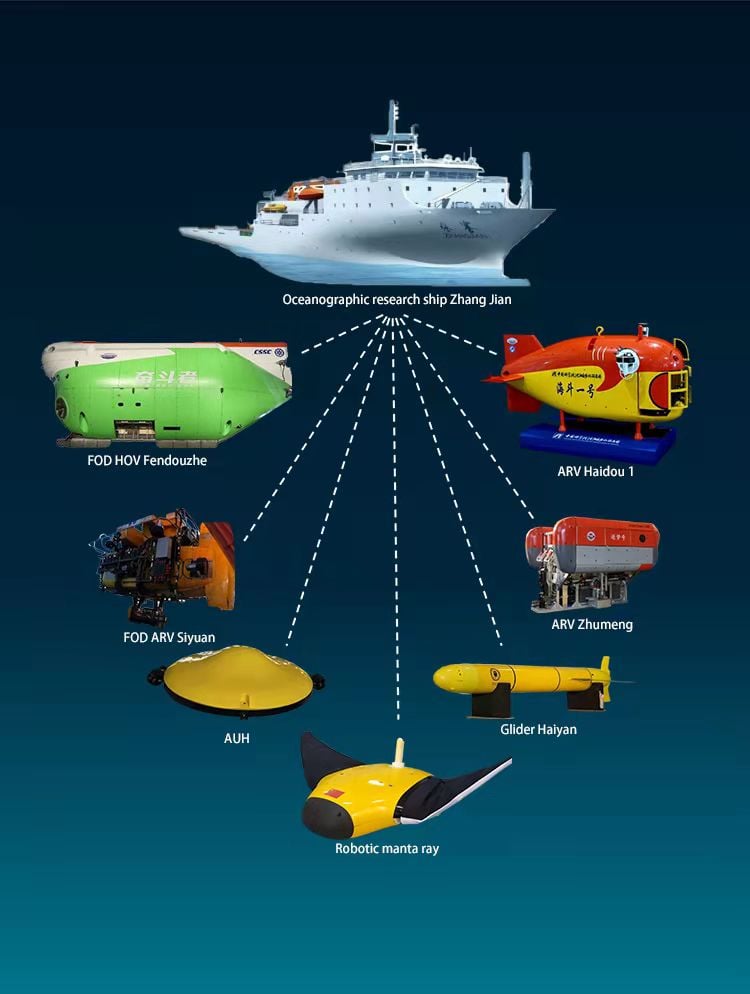Frontiers in Deep-Sea Equipment and Technology
A special issue of Journal of Marine Science and Engineering (ISSN 2077-1312). This special issue belongs to the section "Ocean Engineering".
Deadline for manuscript submissions: closed (30 June 2022) | Viewed by 77688
Special Issue Editors
Interests: multidisciplinary design optimization and its application; deep-sea equipment development; manned/unmanned submersibles; lander/buoy development; manipulator/propeller/ high-pressure seawater pump/underwater camera and other important components development; metal/organic glass/solid buoyancy material damage mechanism; strength and fatigue life prediction of structures
Special Issues, Collections and Topics in MDPI journals
Interests: remotely operated vehicles; intelligent glider; autonomous underwater vehicle (AUV); unmanned surface vehicles; path planning
Special Issues, Collections and Topics in MDPI journals
Special Issue Information
Dear Colleagues,
The conflict between population, resources and environment in twenty-first century made the ocean the strategic space and resource treasure of human society to realize sustainable development. In order to study the ocean environment and exploit the ocean resources, a fundamental understanding of complex and interwoven ocean processes across a broad range of spatial and temporal observational scales is required. This is heavily relied on various research fleet and equipment to support increasingly complex, multidisciplinary, multi-investigator research projects, including those in support of autonomous technologies, ocean observing systems, process studies, remote sensing, and modeling. Various underwater submersibles are the main working force for the research fleet. In this special issue, relevant experts are invited to report the latest progress on Frontiers in Deep-Sea Equipment and Technology.

Prof. Dr. Weicheng Cui
Prof. Dr. Lian Lian
Prof. Dr. Guang Pan
Guest Editors
Manuscript Submission Information
Manuscripts should be submitted online at www.mdpi.com by registering and logging in to this website. Once you are registered, click here to go to the submission form. Manuscripts can be submitted until the deadline. All submissions that pass pre-check are peer-reviewed. Accepted papers will be published continuously in the journal (as soon as accepted) and will be listed together on the special issue website. Research articles, review articles as well as short communications are invited. For planned papers, a title and short abstract (about 100 words) can be sent to the Editorial Office for announcement on this website.
Submitted manuscripts should not have been published previously, nor be under consideration for publication elsewhere (except conference proceedings papers). All manuscripts are thoroughly refereed through a single-blind peer-review process. A guide for authors and other relevant information for submission of manuscripts is available on the Instructions for Authors page. Journal of Marine Science and Engineering is an international peer-reviewed open access monthly journal published by MDPI.
Please visit the Instructions for Authors page before submitting a manuscript. The Article Processing Charge (APC) for publication in this open access journal is 2600 CHF (Swiss Francs). Submitted papers should be well formatted and use good English. Authors may use MDPI's English editing service prior to publication or during author revisions.
Keywords
- Deep-Sea Equipment
- Submersible
- Glider
- Autonomous Underwater vehicle (AUV)
- Remotely Operated Vehicle (ROV)
- Human Occupied Vehicle (HOV)
- Autonomous and Remotely-operated Vehicle (ARV)
- Robotic Fish
- Full Ocean Depth (FOD)







